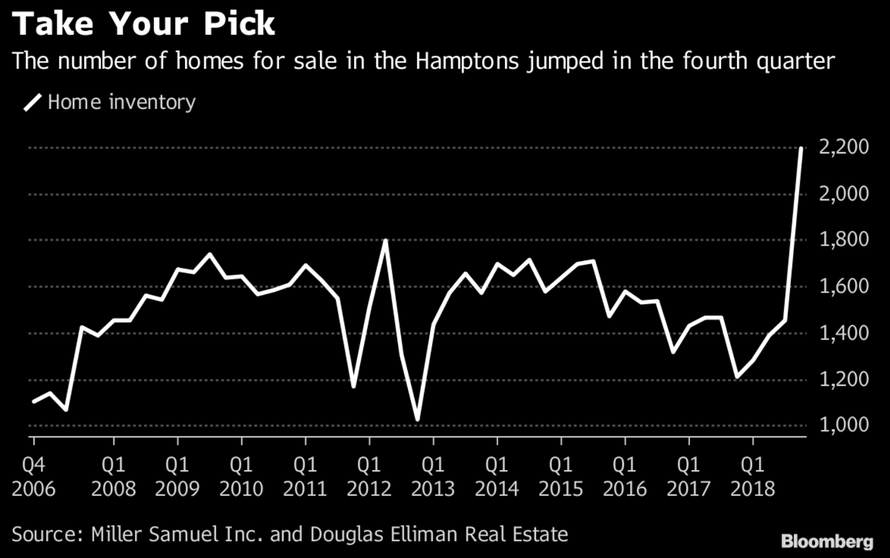Authored by Richard Ebeling via The American Institute for Economic Research,
The philosopher George Santayana is credited with the phrase “Those who cannot remember the past are condemned to repeat it.” Never was that truer than today in the face of the reborn belief in some notion of a “democratic” socialism and its companying idea of government-directed planning and redistribution. It’s as if the entire experience of the 20th century has been erased from the memory of humankind.

Almost every conceivable form of “socialism” was tried over the last 100 years. There has been Marxian socialism in the form of Soviet-style fully nationalized economies with strict and comprehensive five-year government central planning. There was national socialism in the Germany of the 1930s and 1940s, with private enterprise placed under total government control with Nazi four-year central planning. There was Mussolini’s Italian fascism, under which private businesses and workers were forced into cartels and trade unions with government oversight and command of prices, wages, production, work conditions, and trade. (See Günter Reimann, The Vampire Economy: Doing Business Under Fascism [1939], and Walter Eucken, “On the Theory of the Centrally Administered Economy: An Analysis of the German Experiment” [1948].)
There was British “democratic” socialism under the post–World War II Labor-party government, with nationalized industries, socialized health care, and central planning. There was a French version under the name of “indicative” planning, under which the government manipulated prices and production incentives to direct capital and labor where the central planners thought they should go. (See John Jewkes, Ordeal by Planning [1948], Bertrand de Jouvenel, The Problems of Socialist England [1949], and Vera Lutz, Central Planning for the Market Economy: An Analysis of the French Theory and Experience [1969].)
There have been government planning through regulations and redistributions of wealth through fiscal policy. This regulatory-redistributive model of government oversight and directing of social and economic outcomes grew out of the discovered and admitted inescapable limits and shortcomings of more-direct government planning and control of economic affairs.
Costs and Consequences of Socialism-in-Practice
The human cost experienced from the extreme forms of socialism-in-practice goes beyond most of our imaginations. Tens of millions of people — ordinary, unarmed, and innocent men, women, and children — were starved, tortured, shot, or worked to death in slave-labor camps in the name of building that bright and beautiful paradise on earth that the communists, fascists, and Nazis all promised would belong to those they had designated the righteous and justly deserving social class, national group, or racial tribe. (See my article “The Cost of Socialism in Power.”)
British democratic socialism foundered on the discovery that even in a democracy, government socialist planning entails imposing commands on everyone that succeed in only making life stagnant, dull, and poor for most in society. Indeed, this is how we have ended up with highly regulated economies combined with often-extensive networks of income redistribution and social safety nets.
Centralized planning did not work and usurped a high degree of everyday decision-making from the citizenry in virtually every corner of the society. So, there was a step back: regulated businesses still possessing degrees of discretion over the direction of much of their enterprises in the pursuit of profits, and market-earned incomes that were then modified through the tax code to transfer sums of money and various goods and services into the directions those in political power considered superior to those generated by a more free market. (See my articles “Barack Obama and the Meaning of Socialism” and “Obama’s ‘Middle Way’ Between Capitalism and Socialism Means Less Liberty.”)
Memories Lost and Socialist Dreams Reawakened
The collapse of the Soviet Union in 1991 and the admitted failure of government central planning and its accompanying brutality around the world threw socialism into disrepute and seemingly out of the arena of public policy debate. This has been reversed following the financial crisis of 2008-9 and its aftermath, with it being classified and condemned as a new demonstration of the failure of capitalism. In its wake, socialist ideas have been gaining a new rebirth among academics and the media pundits.
Not that all the socialist sympathizers had really disappeared after the end of Soviet socialism. They had simply and mostly silently sulked in the corners of higher education and various other intellectual circles, not knowing how to fully get away from the embarrassment of socialism’s disastrous history during the 20th century. The last 10 years have slowly been giving them a new lease on life.
This has been made easier with the passage of time and with a new and younger generation that has no living memory and less of an interest in understanding what socialism-in-practice really led to, in spite of all the promises and rhetoric with which it covered itself during its heyday of coming to power in various places around the world. (See my article “Disaster in Red: The Hundredth Anniversary of the Russian Socialist Revolution.”)
Bernie Sanders’ campaign in the Democratic party’s primaries in 2016 demonstrated the renewed attractiveness of the “democratic”-socialist idea. Millions were attracted to his promise of a beautiful social and economic future, if only government took a far greater directing and redistributing hand in everything in American society. (See my articles “‘Democratic Socialism’ Means a Loss of Liberty” and “‘Liberal Socialism’ Another False Utopia.”)
A Green New Deal Means Central Planning
Now additional voices for a new socialism are on the public scene, such as the recently elected Democratic-party representative from New York, Alexandria Ocasio-Cortez, who is also a member of the Democratic Socialists of America. Even before being sworn in to the House of Representatives in early January 2019, she and others presented a proposal for a special and select congressional committee for the preparing and implementing of a Green New Deal.
Make no mistake, this is a plan for the introduction of comprehensive government planning over every facet of American social and economic life. Arguing that the world is facing an environmental Armageddon due to global warming, the time for doing nothing or relying upon carbon taxes to reduce use of fossil fuels or business regulations to influence how private enterprises produce goods and services, they say, is behind us.
Action must be taken now to change how and what Americans produce and consume over the next decade. There must be developed “a detailed, national, industrial, economic mobilization plan.” It must be “driven” by the federal government in “partnership” with business, labor, “stakeholder” groups, indigenous peoples, and communities all across the land, for a radical and rapid transition to a fully carbon-free environment.
A Carbon-Free Road to Social Justice
This must be done in conjunction with commitments and goals for “social, economic, racial, regional, and gender-based justice and equality.” Labor unions must have a prominent place, with the ability to direct wages and employment conditions for workplace justice in the pursuit of a post-carbon economy. The federal government should take equity positions — that is, total or partial direct ownership — in businesses, industries, and sectors of the economy as a means to hit the target of radical environmental change.
The goal is to have a “100 percent” fossil fuel–free economy within 10 years. All businesses and residential structures will have to be dramatically made over to environmentally friendly renewable sources of energy. Where and what is produced will have to be commanded by the federal government for both industry and agriculture.
At the same time, this grand and comprehensive central planning of American society to save the planet can also serve as “an historic opportunity to virtually eliminate poverty in the United States and to make prosperity, wealth and economic opportunity available to everyone participating in the transformation” of the country.
This will include more government-sponsored and government-provided education and skills training that will include “job guarantee programs to assure a living wage job to every person who wants one.” Government plans and programs will be especially targeted to help end “deeply entrenched racial, regional and gender-based inequalities in income and wealth”; and “without limitation” there will be those redistributions and government investments needed to lift up “marginalized” groups in various parts of the country.
How will all of these activities be successfully funded? This proposed Green New Deal agenda would have its costs covered not only by the usual federal and other taxes, with emphasis on the need to especially tax “the rich.” No, the proposal calls for using “a combination of the Federal Reserve, a new public bank or system of regional and specialized public banks, [and] public venture funds” to ensure that the profitable returns expected from the central plan’s implementation come back to the Treasury for selected future tax cuts and for even more government investments in the future.
The New Socialists Want to Be the Central Planners
The congressional committee that is proposed to develop and submit the detailed and concrete elements of the Green New Deal plan would also have the authority to direct and oversee its implementation. In other words, Alexandria Ocasio-Cortez and her collaborators sitting on such an approved congressional committee want to have control over what would be an American version of the Soviet Union’s GOSPLAN — that is, a government agency responsible for the total central planning of the United States.
Central planners are always grandiose in their visions and impatient in getting to work to remake society in their own image. Our new American socialists are no different in this than their ideological collectivist cousins were in other parts of the world over the last century.
The actions and investments of individuals and private enterprises are too small and unorganized. Redesigning all of America in such a short time to save the planet and finally establish “social justice” in all its aspects requires, they assert, “massive” levels and speeds of investment, along with a government-size time horizon of decades that encompasses the entire society without exception.
Only government, guided by those who know and understand what has to be done, and when and where, can handle such a vast undertaking, they insist. The task our new socialists have appointed for themselves is the relocating of industries, reshaping of agriculture, transforming of how work is done with what types of energy sources, and reorganizing of social life according to a vision of social, racial, and gender “justice.”
It all conjures up images of those Soviet five-year central plans with industrial centers created in the middle of desolate nowheres, and huge canals connecting mighty rivers, and all built with the hands of “class-enemy” slave laborers — or the giant Nazi construction projects of autobahns crisscrossing Germany and larger-than-life sports stadiums to sit tens of thousands of cheering followers of “the leaders” who were building a new world based on racial identity politics, not much different from the premises of our new tribe-based American socialists and progressives. (See my article “An ‘Identity Politics’ Victory Would Mean the End to Liberty.”)
The Hubris of Our Would-Be Central Planners
The hubris just oozes from every presumption according to which these American central planners just know what needs to be done and why everyone else must cheerfully, enthusiastically follow the commands of our would-be national-socialist führers. The plan for this Green New Deal shows its totalitarian premise in each of its proposed elements. No corner of the economy would be exempt from the green planners’ control. Every human association and status in society would be subject to modification as determined by the social-justice warriors in power.
The transformation of America must be done within 10 years if the planet is to be saved from irreparable environmental damage, they assert. The planners are confident that in 2020, the Democratic party will not only retain its control over the House of Representatives, but also capture the Senate as well as the White House. Then it will be “all power to the democratic socialists.” The plan will be ready for immediate implementation. They are in a hurry, and there is no time to waste.

Once Democratically Chosen, No Reversing Socialism
But what happens to democracy after that? What if “the people” have second thoughts in election years 2022 or 2024 or 2026 or 2028? What if other voices challenge the premises and the policies of the Green New Dealers? If planetary existence and social justice for all time are at stake, can our democratic socialists allow the fickle and wrong-headed voting decisions of some of the people to alter the collectivist course that has been taken?
Surely, it would be irrational to permit the central plan to be dismantled, to backslide into chaotic and petty profit-motivated self-interest, to undo all that the revolution had been attempting to achieve. The socially just people’s will could not be allowed to be reversed because of some people’s misinformed and misguided voting whims under the influence of sinister interests swaying them against their true and real interests.
Oh, we have heard all this before, and no doubt, if they were to come to power, we would hear it all once more. But, but … it can’t happen here! Think again. The logic of central planning undermines the institutions and the spirit of liberty. By concentrating power and decision-making in the hands of those in government, socialist central planning first weakens and then eliminates autonomous centers of choice and association.
Property Rights and Personal Choice
One of the most essential aspects of private property rights is that it creates potential centers of control and discretion outside of the clutches of those in political authority. Private property in functioning free markets enables sources of employment and income independent of the government. The individual does not have to worry about loss of a government job, or his government-supplied income and benefits, or his chances for personal betterment due to any disagreement with or peaceful opposition to the policies and practices of the state.
Competitive, free markets provide avenues for a plethora of ways for multitudes of people to simultaneously follow diverse ends with alternative means considered better than those selected by others in society. Mistakes and second thoughts concerning what goals and purposes to pursue and how best to do so may be modified in many different ways by different people at different times, without needing to persuade or gain the electoral agreement of enough others through a voting process. (See my article “Political Planning vs. Personal Planning by Everyone.”)
Central Planning Means Centralized Decision-Making
But this is exactly what our new American socialists are impatient with and want to do away with. There needs to be one master hierarchy of values, with one centrally guiding and implemented master plan to bring it to fruition, with all in the society accepting and making their own personal wishes and desires subordinate to it.
What they really want is a version of “democratic centralism” — that is, an inner circle of people ideologically motivated by the same general collectivist purposes and ideals who bargain over and divide the social spoils for the identity-politics-based factions and interest groups that they, respectively, represent, with no interference from the ignorant “reactionary” and supposedly race- and gender-bigoted individuals and groups who don’t understand the nature of a real “people’s democracy.”
The role of these uninformed masses, who must be constantly subject to government “re-education,” is to produce the wealth and output that the Green New Deal planners need to pursue their power-lusting dreams. And don’t worry, if they cannot plunder enough wealth through taxation to cover the costs of their social-engineering schemes, they say they will turn to the Federal Reserve to create all the paper money they will need to pay for all that they want to do. Welcome to the possibility of a Venezuela-style hyperinflation on the back of a stagnant economy built on the political insanity of those who claim to know how everyone should live under the central planners’ agenda for a new, carbon-free world.
These are dangerous ideas that threaten anew the foundations and functioning of what remains of personal freedom and free enterprise in the United States. The Green New Dealers’ self-righteous fanaticism and ideological enthusiasm for a collectivist America should not be underestimated. Understanding their misguided political assumptions and the damaging economic consequences that would follow from their coming to power is essential if a “green” road to serfdom is to be avoided.

via ZeroHedge News http://bit.ly/2WgIsCh Tyler Durden













